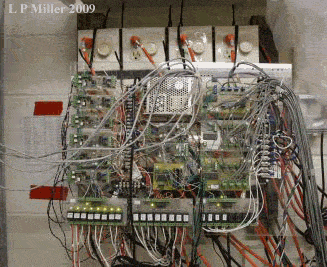Surprisingly, it all works...

I've spent the last few months assembling a conglomeration of parts to set up a new experiment in lab, designed to assess the effects of altered environmental temperatures on snail performance. The goal is to provide these rocky shore whelks with a set of environmental conditions that is as realistic as possible within the confines of a mesocosm, and then augment the ambient temperatures in a subset of the mesocosms.

The snails get to experience the same tidal cycle as in the field, using the local Boston Harbor tide predictions. When the ocean tide drops below the "shore height" of the mesocosms, the tide in the mesocosms drops as well. During high tide, the mesocosms fill with water. The whole setup gets a normal day/night light cycle, since it's outside, and gets exposed to the midday and afternoon sun, similar to a west-facing intertidal site. Temperature increases are accomplished using water heaters at high tide and infrared heat lamps at low tide. Catherine Matassa and her elves (Sarah, Tania, and Nels) helped build the mesocosms that the snails call home.

The setup took a whole lot of custom doohickeys to make it work. Temperatures are continually monitored and power output for the heaters is modulated to produce the desired temperature increase using the circuits pictured above.

A computer runs everything, records data continuously, and even occasionally posts updates to Twitter so that I can keep tabs on what's happening in lab even when I'm not there.

The status of the experiment also gets posted to the web every five minutes or so at its own special status page.
We'll have to wait and see what all this produces in the experiment down the road.

<< Home